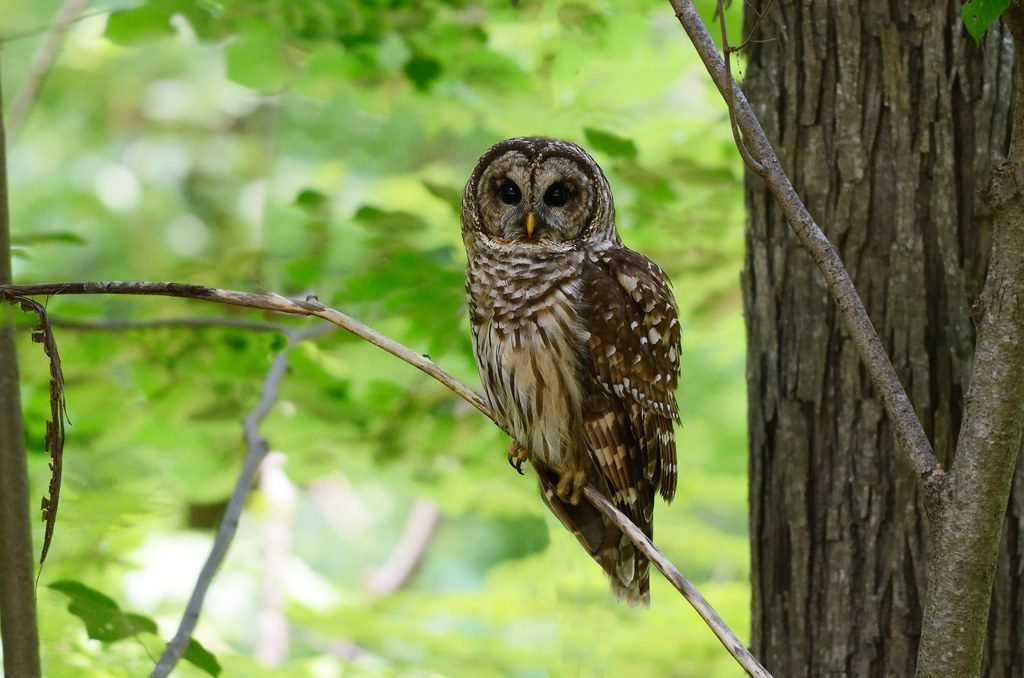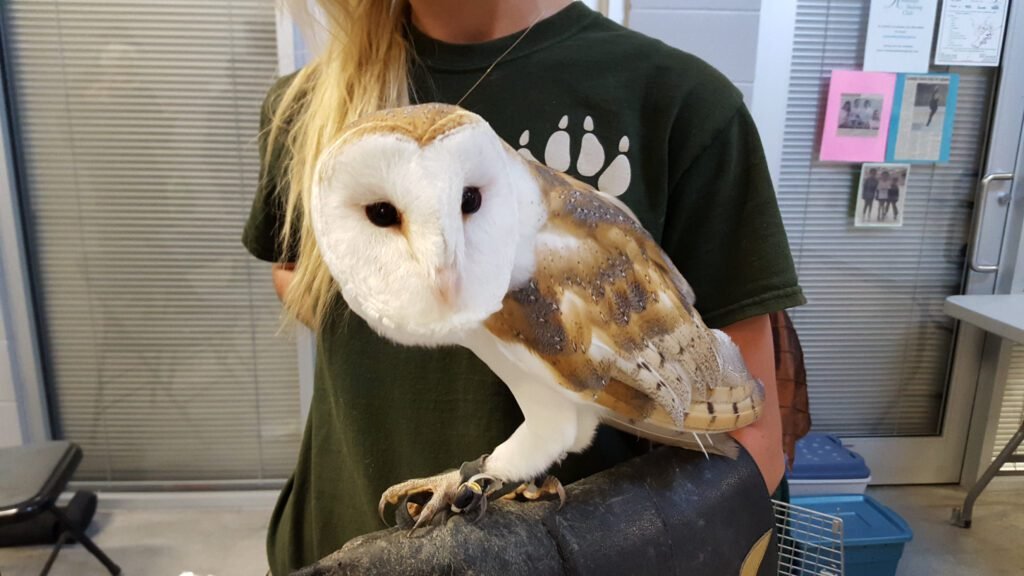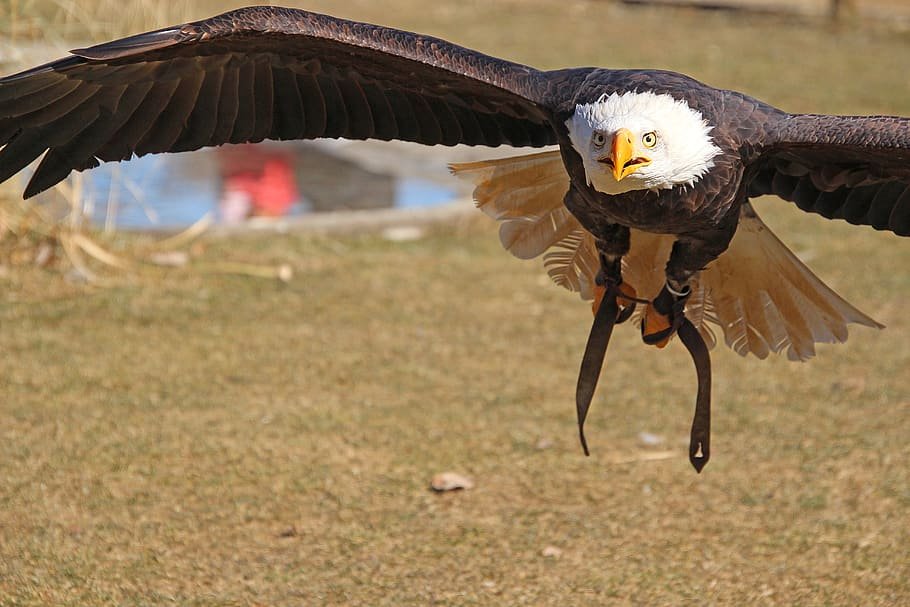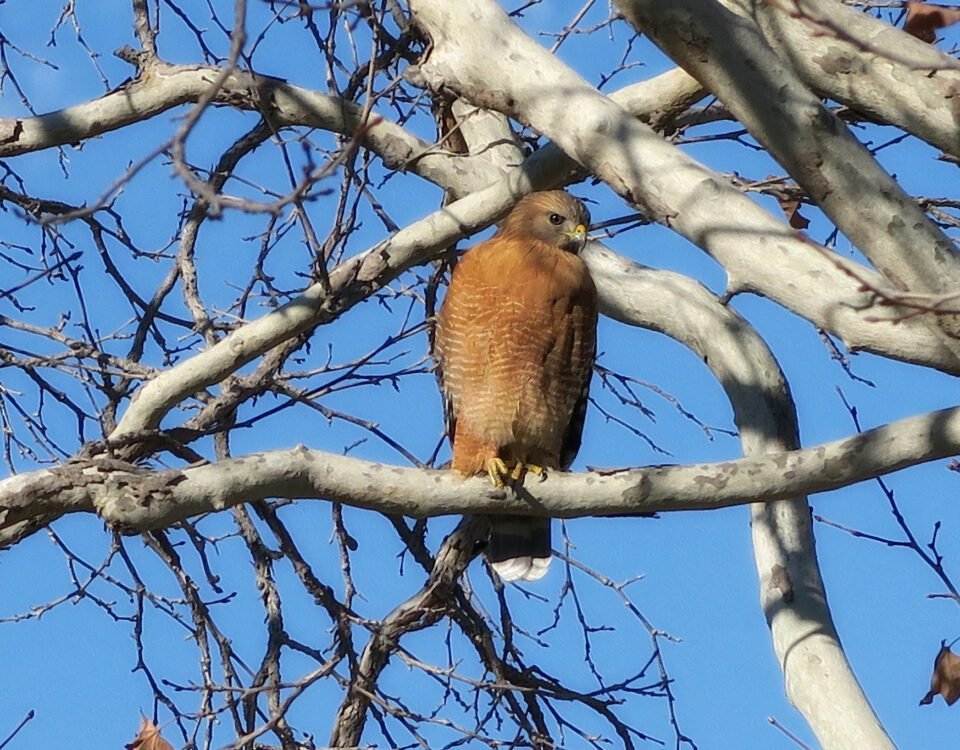


Sparrow Spiritual Meaning (+ Dreams, Spirit, Power & Totem)
November 22, 2023


Spiritual Meaning: Bird Nest at Front Door?
November 23, 2023Hunting owls is a topic that raises many questions about wildlife laws and conservation. Owls, with their mysterious nature and nocturnal habits, are fascinating birds. However, knowing if you can hunt these birds or own them as pets is essential.
In this article, we will talk about owls and other birds that can be hunted or not. Understanding these rules helps us appreciate and protect the incredible wildlife around us.
Can You Hunt Owls?
Owls, like other non-game birds, such as Hawks, eagles, and songbirds, are safeguarded under various state and federal regulations. These laws prohibit killing, removing from nests, handling, or possessing these birds for any reason. Additionally, it is illegal to own or sell their feathers. Under no circumstances can arts and crafts incorporate materials from these protected species.


Barred Owls
Owls are not classified as game birds, meaning they cannot be hunted or shot. Capturing or possessing them is also prohibited unless you have a specific permit granting permission.
The Migratory Bird Protection Act, a federal law, prohibits the shooting, poisoning, hunting, trapping, caging, or killing of protected birds. You are only allowed to shoot or kill an owl if you have a license issued by the U.S. Fish and Wildlife Service authorizing such action.
However, this permission to shoot or kill an owl is typically granted only in circumstances that pose a threat to public health and safety. Shooting a protected bird without a permit or valid reason can result in severe penalties, including hefty fines and imprisonment.
Related Read: Are Owls Loyal and Friendly? (Everything You Need To Know)
Is It Legal To Own An Owl As A Pet?
For many, typical pets include dogs, cats, turtles, rabbits, goldfish, parrots, and backyard chickens. However, some people seek more exotic, less conventional companions, such as owls, hawks, or eagles.


Is It Legal To Own An Owl As A Pet?
This preference for wild birds is unique, and the main concern here is the legality of keeping these animals as pets.
- The rules differ significantly across the United States. For example, owning an owl is perfectly legal in states like Alabama, Delaware, Louisiana, Minnesota, Nebraska, Nevada, and Tennessee.
- On the other hand, owning an owl is illegal and could lead to severe legal repercussions in states such as Alaska, California, Connecticut, Colorado, Hawaii, Iowa, Massachusetts, Oregon, and Wyoming.
- Other states offer a middle ground, allowing owl ownership under certain conditions. In Idaho, for instance, you can own an owl if you demonstrate that it won’t harm agriculture, livestock, or the environment and apply for a permit.
- States like Indiana, Maine, Michigan, and Pennsylvania require a permit or license to own an owl. In Vermont, owls can only be kept for educational or exhibition purposes, while Texas allows owls with a license, depending on the bird’s perceived danger level.
Therefore, the regulations on owning exotic or protected birds like owls vary significantly across states. It’s crucial to consult your state’s laws to understand the specific requirements and legalities involved.
Can I Shoot An Owl If It Is Hurting My Pets?
Maintaining predator populations, including raptors like owls, is crucial for ecological balance. Nature’s design relies on this equilibrium, so the 1918 Federal Migratory Bird Treaty Act was enacted to preserve it.
Given this context, even if an owl is preying on your chickens or other pets, you cannot legally shoot it without a permit. Federal law applies in such situations.
When granted, a permit is typically for short-term use, urging the holder to find a long-term, non-lethal solution for protecting their poultry. To obtain a license, you must demonstrate:
- The damage or loss caused by the owls.
- Your commitment to adhere to the permit’s conditions.
- Your efforts to implement a short-term, non-lethal response to the problem.
Constructing a secure poultry or other pet enclosure is a sustainable solution to protect your animals from owl attacks.
Fines and Penalties for Hunting Endangered and Protected Birds
The fines for hunting endangered and protected birds can be substantial, but they vary depending on the specific circumstances and the laws of the country or state where the offense occurs. In the United States, for example:
- Endangered Species Act (ESA): Violating the ESA by hunting endangered species can result in fines of up to $50,000 or more and imprisonment for up to one year.
- Migratory Bird Treaty Act (MBTA): This act protects birds like hawks, owls, and eagles. Fines for violating the MBTA can reach up to $15,000 per violation and may include imprisonment.
- Bald and Golden Eagle Protection Act: This law protects explicitly bald and golden eagles. Violations can result in fines of up to $100,000 for individuals ($200,000 for organizations) and imprisonment for up to one year for a first offense.
These penalties are for federal offenses. State laws may impose additional fines and penalties. It’s also worth noting that fines and penalties can be higher for repeat offenses or particularly egregious violations. In some cases, fines can be levied per bird harmed or killed, significantly increasing the total.
List Of Other Protected And Non-Huntable Birds
Bald Eagle
The Bald Eagle, America’s national symbol, is known for its majestic appearance, with a white head and tail contrasting its dark brown body and wings. Once endangered due to hunting and pesticides, it has made a remarkable recovery and is now protected under the Bald and Golden Eagle Protection Act.


Bald Eagle
California Condor
The California Condor is one of the world’s rarest bird species, recognizable by its massive wingspan and primarily black plumage. Conservation efforts have helped its numbers, but it remains critically endangered and protected under the Endangered Species Act.
Whooping Crane
The Whooping Crane is the tallest North American bird, noted for its striking white plumage and red crown. With a dramatic decline in the 20th century, it is now protected under the Endangered Species Act. Efforts to preserve its habitat are crucial for its survival.
Red-Cockaded Woodpecker
This small woodpecker, distinguished by its black and white striped pattern and a small red streak on the males, is native to southeastern U.S. forests. Habitat loss has endangered it, and is now protected under the Endangered Species Act.


Red-Cockaded Woodpecker
Kirtland’s Warbler
A small songbird with blue-gray back and yellow belly, Kirtland’s Warbler nests only in young jack pine forests. It’s one of North America’s rarest birds, endangered due to habitat specialization, and protected under the Endangered Species Act.
Piping Plover
The Piping Plover is a small, sandy-colored bird that nests and feeds along North America’s coastal sand and gravel beaches. Threatened by habitat destruction and human disturbance, it is protected under the Endangered Species Act and the Migratory Bird Treaty Act.
Peregrine Falcon
Once endangered due pesticide use, the Peregrine Falcon has made a successful comeback. Known for being the fastest bird, reaching speeds over 200 mph in dives, it is still protected under the Migratory Bird Treaty Act to ensure its continued conservation.
Northern Cardinal
The Northern Cardinal is a vibrant bird known for the male’s brilliant red feathers and the female’s more subdued brownish plumage with red highlights. Widely admired, this bird is protected under the Migratory Bird Treaty Act, prohibiting its hunting and capture.
Green Jay
Green Jays are striking birds in southern Texas and Central America. They are known for their bright green and blue plumage and noisy social behavior. These birds, too, are protected under the Migratory Bird Treaty Act.
Turkey Vulture
The Turkey Vulture is a large bird, easily identifiable by its red bald head and dark plumage. It plays a vital role in the ecosystem as a scavenger. Protected under the Migratory Bird Treaty Act, hunting or harming these birds is illegal.


Vulture
House Finch
House Finches are small birds, with the males displaying bright red, orange, or yellow on their heads and breasts. Common across much of North America, they are protected under the Migratory Bird Treaty Act.
Roseate Spoonbill
Known for its stunning pink plumage and distinctive spoon-shaped bill, the Roseate Spoonbill is found in coastal regions of the southeastern U.S. and parts of South America. It is protected under the Migratory Bird Treaty Act.


Roseate Spoonbill
Great Blue Heron
The Great Blue Heron is a large wading bird, notable for its blue-gray plumage and graceful flight. Common near shores and waterways, it is protected under the Migratory Bird Treaty Act, which helps preserve its habitats and populations.
Black Skimmer
The Black Skimmer is unique for its black upper body, white underparts, and remarkable beak, with the lower mandible longer than the upper. Found along coasts, it is protected to help maintain healthy populations, as it is vulnerable to habitat disturbances.
Painted Bunting
The Painted Bunting is known for the male’s vibrant multicolored plumage, making it one of North America’s most colorful birds. They are commonly found in the southern U.S. and are protected under the Migratory Bird Treaty Act due to their declining numbers in some regions.
Conclusion
Understanding the laws is crucial before capturing, hunting, or harming protected or endangered animals and birds. Generally, killing protected birds is prohibited unless you obtain a specific permit. Such permits are usually issued when these birds pose a threat or cause damage to your property, livestock, or the environment.
Nevertheless, these permits are meant for temporary measures. Creating long-term strategies to prevent these birds from accessing your property is essential. Owning owls as pets is permissible in some states but varies by location. As for hunting endangered animals, it is outright illegal in most circumstances.



